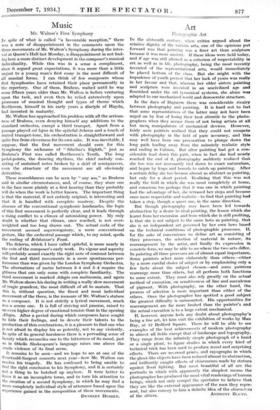Art
Photographic Art
Ix the sixteenth century, when critics argued about the relative dignity of the various arts, one of the opinions put forward was that painting was a finer art than sculpture because it was more ancient. If these ideas were held today, and if age was still allowed as a criterion of respectability in art as well as in life, photography, being the most recently invented of the representational arts, would immediately be placed bottom of the class. But she might with the impudence of youth protest that her lack of years was really in her favour and that, whereas her elder sisters painting and sculpture were invented in an uncivilized age and flourished under the old tyrannical systems, she alone was adapted to our mechanized world and democratic structure.
In the days of Daguerre there was considerable rivalry between photography and painting. It is hard not to feet that some representatives of the latter may not have been urged on by fear of losing their best client& to the photo- graphers when they accuse them of not being artists at all but mer% manipulators of mechanical devices. However, fairly soon painters realized that they could not compete with photography in the field of pure accuracy, and this may well have been one provocation to plunge down the long path leading away from the minutely realistic style and ending in Cubism. But after painting had got a con- siderable lead down this path, when in fact she had nearly reached the end of it, photography suddenly realized that she too was not necessarily tied down to exact naturalism, and began by leaps and bounds to catch up painting. After a certain delay she too became almost as abstract as painting, but only for a short period. Realizing that this was not really the field in which she was most completely at home, and conscious too perhaps that it was one in which painting had the advantage of her, she retraced her steps and became once more respectable and realistic—to find that painting had taken a step, though a queer one, in the same direction.
But though photography may have been led towards abstraction by a desire to rival painting, the lesson which she learnt from her excursion and from which she is still profiting, is that she is not subject to the same laws as painting, that she is an independent art governed by her own laws based on the technical conditions of photographic processes. lf, for the sake of convenience we define art as consisting of three processes, the selection of material in nature, its rearrangement by the artist, and finally • its expression in concrete form, we may be able to see where the two arts differ. In painting all three processes are of almost equal importance. Some painters select more elaborately than others—either by a more careful choice of subject or by emphasizing only a few facts about the subject chosen—and some painters rearrange more than others, but all perform both functions to some extent. They must also rely greatly on the actual method of execution, on sensitiveness of line and succulence of pigment. With photography, on the other hand, the process of selection is more important than either of the others. Once the photographer has spotted a good subject the greatest difficulty is surmounted. His opportunities for rearrangement are far more limited than the painter's and the actual execution is to a large extent mechanical.
If, however, anyone feels any doubt about photography's being a fine art, let him visit the exhibition of works by Man Ray, at 12 Bedford Square. There he will be able to see examples of the best achievements of modern photography in almost all fields except that of landscape and topography. They range from the infinitely simple photograph of a hand or a single plant, to figure studies in which every kind of technical trick has been used to produce novel and surprising effects. There are reversed prints, and rayographs in which the ghost-like objects have been reduced almost to abstraction, and brilliantly caught effects of ehiaroscurci made by statues against flood lighting. But most beautiful of all are the portraits in which with apparently the simplest means the photographer has produced the most vital renderings of human beings, which not only compel the spectator to believe that they are like the external appearance of the men they repre- sent, but also convey to him a definite idea of the characters Of the sitters.
Ammo BLUNT.


















































 Previous page
Previous page